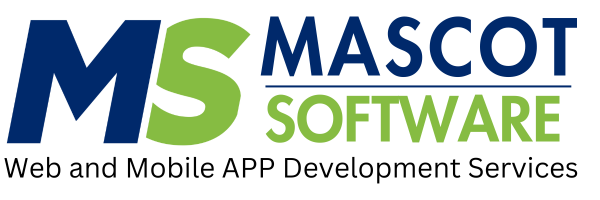
Why Choose PHP for E-commerce?
PHP powers a significant portion of the web, including many popular e-commerce platforms like Magento, WooCommerce, and OpenCart. Here are a few reasons why PHP is an ideal choice for e-commerce development:
-
Flexibility and Customization: PHP allows for extensive customization, enabling you to tailor your e-commerce platform to meet specific business needs.
-
Robust Frameworks: PHP frameworks such as Laravel, Symfony, and CodeIgniter provide solid foundations for building scalable and secure e-commerce applications.
-
Large Community and Resources: A large community of developers means a wealth of tutorials, libraries, and tools are available to streamline development and solve common challenges.
-
Performance: With the right optimization techniques, PHP can handle high traffic and large volumes of transactions efficiently.
Key Strategies for Building Scalable E-commerce Platforms
1. Choosing the Right Framework
Selecting a robust PHP framework is crucial for scalability and maintainability. Laravel is a popular choice due to its elegant syntax, extensive libraries, and built-in tools for tasks like caching, routing, and authentication.
Example: Setting Up Laravel for E-commerce
bash
Copy code
composer create-project --prefer-dist laravel/laravel ecommerce
Laravel's Eloquent ORM makes database interactions straightforward, while its Blade templating engine allows for clean and efficient view management.
2. Database Design and Optimization
A well-designed database is the backbone of any scalable e-commerce application. Normalization helps in reducing data redundancy, while indexing and query optimization improve performance.
Example: Designing a Product Table
sql
Copy code
CREATE TABLE products ( id INT AUTO_INCREMENT PRIMARY KEY, name VARCHAR(255) NOT NULL, description TEXT, price DECIMAL(10, 2) NOT NULL, stock INT DEFAULT 0, created_at TIMESTAMP DEFAULT CURRENT_TIMESTAMP );
Using caching mechanisms like Redis or Memcached can significantly reduce database load by storing frequently accessed data in memory.
3. Implementing Caching
Caching is essential for enhancing the performance and scalability of an e-commerce site. Laravel supports various caching drivers, including file, database, Redis, and Memcached.
Example: Configuring Redis in Laravel
php
Copy code
'cache' => [ 'default' => env('CACHE_DRIVER', 'file'), 'stores' => [ 'redis' => [ 'driver' => 'redis', 'connection' => 'default', ], ], ],
Using caching wisely can dramatically reduce page load times and server load, especially during high traffic periods.
4. Asynchronous Processing
Offloading time-consuming tasks to background processes can improve the user experience and application performance. Laravel queues allow you to defer tasks like sending emails, generating reports, or processing payments.
Example: Using Queues in Laravel
First, set up a queue driver in your .env file:
env
Copy code
QUEUE_CONNECTION=database
Then, create a job class:
bash
Copy code
php artisan make:job ProcessOrder
In ProcessOrder.php:
php
Copy code
public function handle() { // Order processing logic }
Dispatch the job:
php
Copy code
ProcessOrder::dispatch($order);
5. Load Balancing and Horizontal Scaling
Distribute traffic across multiple servers using load balancers. Horizontal scaling ensures that your application can handle increased traffic by adding more servers as needed.
Using cloud services like AWS, Azure, or Google Cloud can simplify the implementation of load balancing and auto-scaling.
6. Security Best Practices
E-commerce platforms handle sensitive user data, including personal information and payment details. Implementing robust security measures is crucial.
-
Use HTTPS: Ensure all data transmitted between the server and client is encrypted.
-
Input Validation and Sanitization: Prevent SQL injection and XSS attacks by validating and sanitizing user inputs.
-
Secure Authentication: Use strong password policies and multi-factor authentication (MFA).
Example: Validating User Input in Laravel
php
Copy code
$request->validate([ 'email' => 'required|email', 'password' => 'required|min:8', ]);
7. Integrating Payment Gateways
Choose reliable payment gateways like Stripe, PayPal, or Authorize.net. Ensure that the payment integration follows PCI DSS (Payment Card Industry Data Security Standard) compliance.
Example: Integrating Stripe with Laravel
Install the Stripe PHP library:
bash
Copy code
composer require stripe/stripe-php
Set up the payment process in your controller:
php
Copy code
\Stripe\Stripe::setApiKey(env('STRIPE_SECRET')); $paymentIntent = \Stripe\PaymentIntent::create([ 'amount' => 1000, 'currency' => 'usd', 'payment_method_types' => ['card'], ]); return response()->json([ 'clientSecret' => $paymentIntent->client_secret, ]);
Conclusion
Building a scalable e-commerce platform with PHP involves a combination of choosing the right tools, optimizing performance, and implementing robust security measures. By leveraging powerful frameworks like Laravel, employing efficient database design, and integrating reliable payment gateways, you can create an online store that not only meets the demands of your customers but also scales with your business growth.
PHP's extensive ecosystem and flexibility make it a suitable choice for developing e-commerce solutions. With careful planning and execution, you can harness PHP to build an efficient, secure, and scalable online store that provides a seamless shopping experience to your users. Happy coding!





.png)
